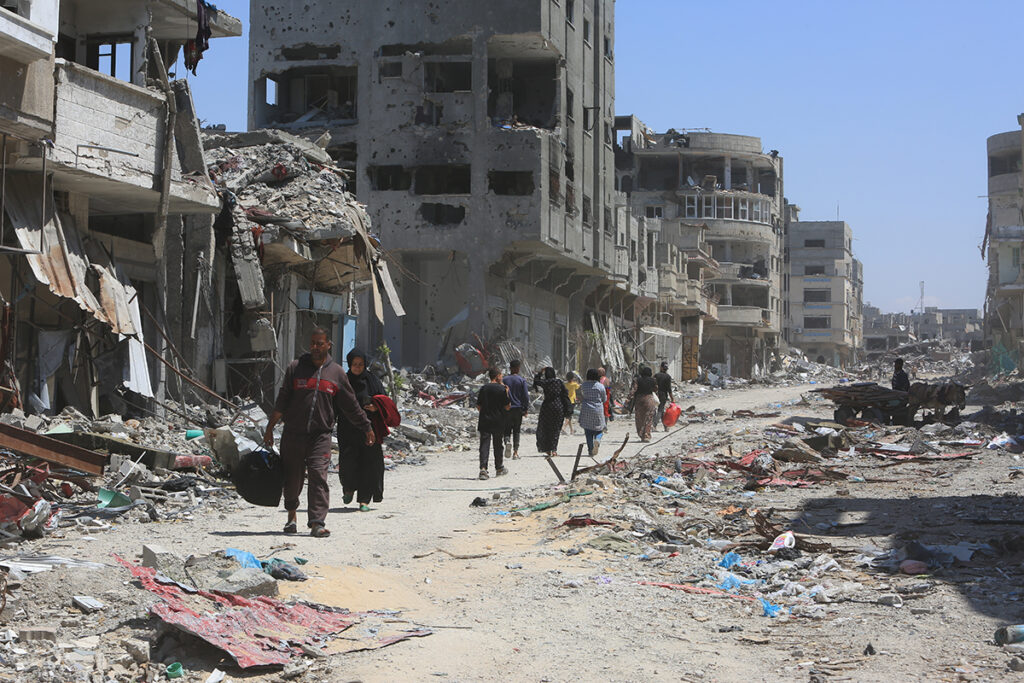As night falls over northern Gaza, much of the city plunges into complete darkness. With infrastructure in ruins, there is no electricity to light the shattered buildings or the makeshift shelters where thousands now live. In the absence of power, families rely on flashlights and phone screens for comfort, using what little battery they have left.
For many returning residents, daily life is a battle for survival. Displaced for much of the 16-month-long war, thousands have returned to homes that are barely standing. Without running water, electricity, or heating, they live amid the wreckage, struggling to clear debris with no tools or resources. Food and water remain scarce, and even basic necessities like firewood for cooking require hours of effort.
The United Nations estimates that around 600,000 Palestinians have returned to northern Gaza since the ceasefire began a month ago. Initially, there was relief and joy at being back, even among those whose homes were destroyed. However, the reality of living in the wreckage has become increasingly difficult. The ceasefire, set to expire on Saturday, has provided temporary calm, but uncertainty looms over what comes next. Efforts to extend the truce continue, but if fighting resumes, those who returned may find themselves in the middle of renewed conflict.
A massive rebuilding effort is desperately needed, yet there is no capacity or funding to begin. A recent report from the World Bank, U.N., and European Union estimates that the cost of reconstruction will reach $53 billion. With entire neighborhoods reduced to rubble, making Gaza livable again is the immediate priority. In early February, Hamas threatened to halt hostage releases unless more tents and shelters were allowed in. Israel later agreed to allow mobile homes and construction equipment, leading to an acceleration of hostage releases.
Humanitarian agencies have expanded their support efforts, setting up free kitchens, water stations, and distributing tents and tarps to hundreds of thousands of displaced people. Gaza City’s municipality has begun clearing some roads and repairing water lines, but the task is overwhelming. The city lacks heavy machinery, with only a fraction of its bulldozers and dump trucks still operational. The U.N. estimates that clearing the estimated 50 million tons of rubble would require 100 trucks working at full capacity for 15 years.
Families are left to rebuild their lives however they can. Some are sheltering in the few remaining intact rooms of their homes, while others live in tents that struggle to withstand winter winds and heavy rains. Many residents have lost nearly everything, with no way to recover belongings buried under collapsed buildings.
Employment opportunities are limited, forcing workers to travel long distances for jobs that provide little security. Hospitals and schools remain severely damaged, leaving medical staff and students struggling to adapt. Some students have resumed studies through online classes, but unreliable internet and electricity make learning difficult.
As desperation grows, humanitarian workers in Gaza report a deep sense of loss among residents who are mourning not just their destroyed homes, but their entire way of life. While efforts to rebuild continue, the road to recovery remains uncertain, with millions still in need of urgent assistance.


